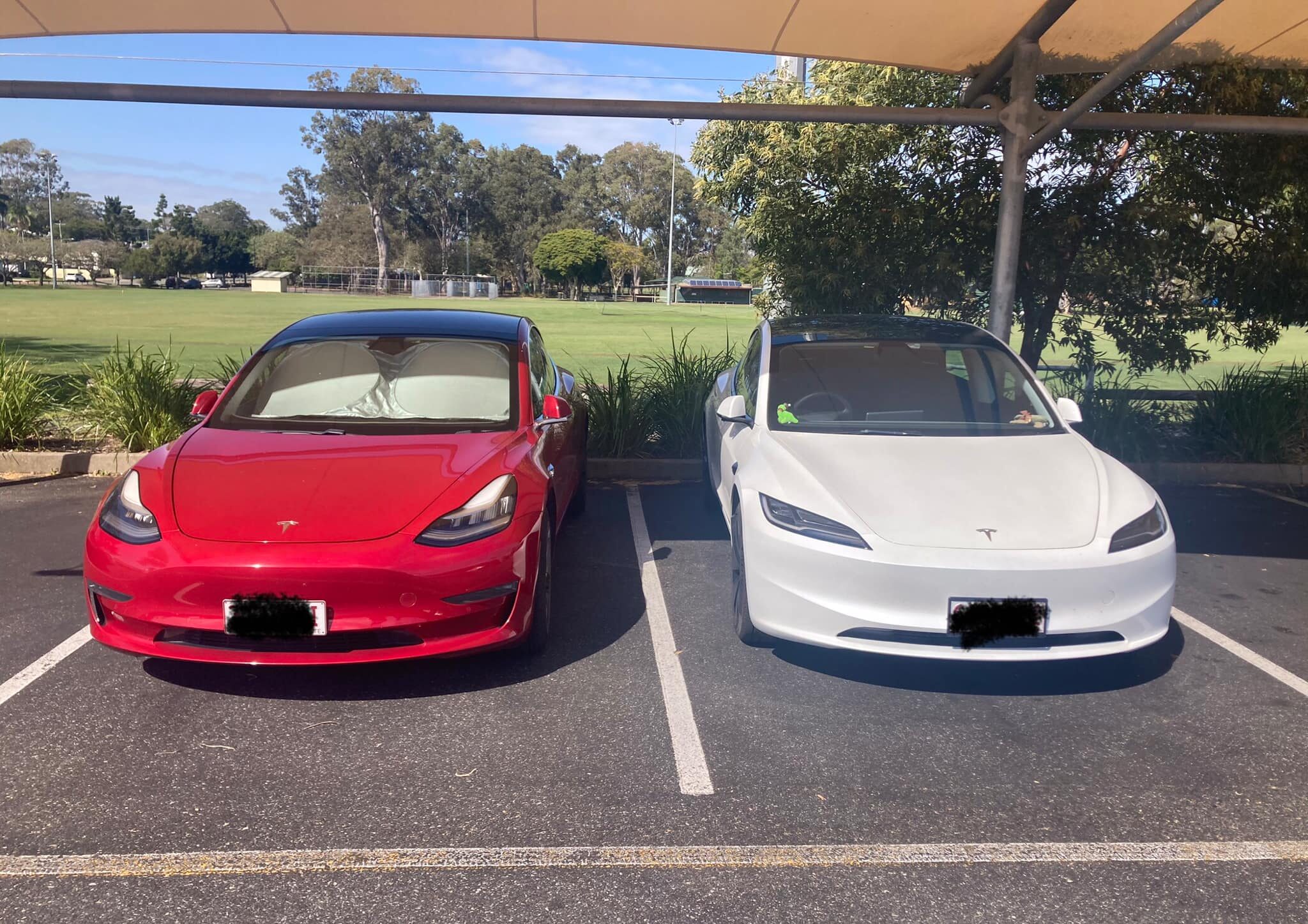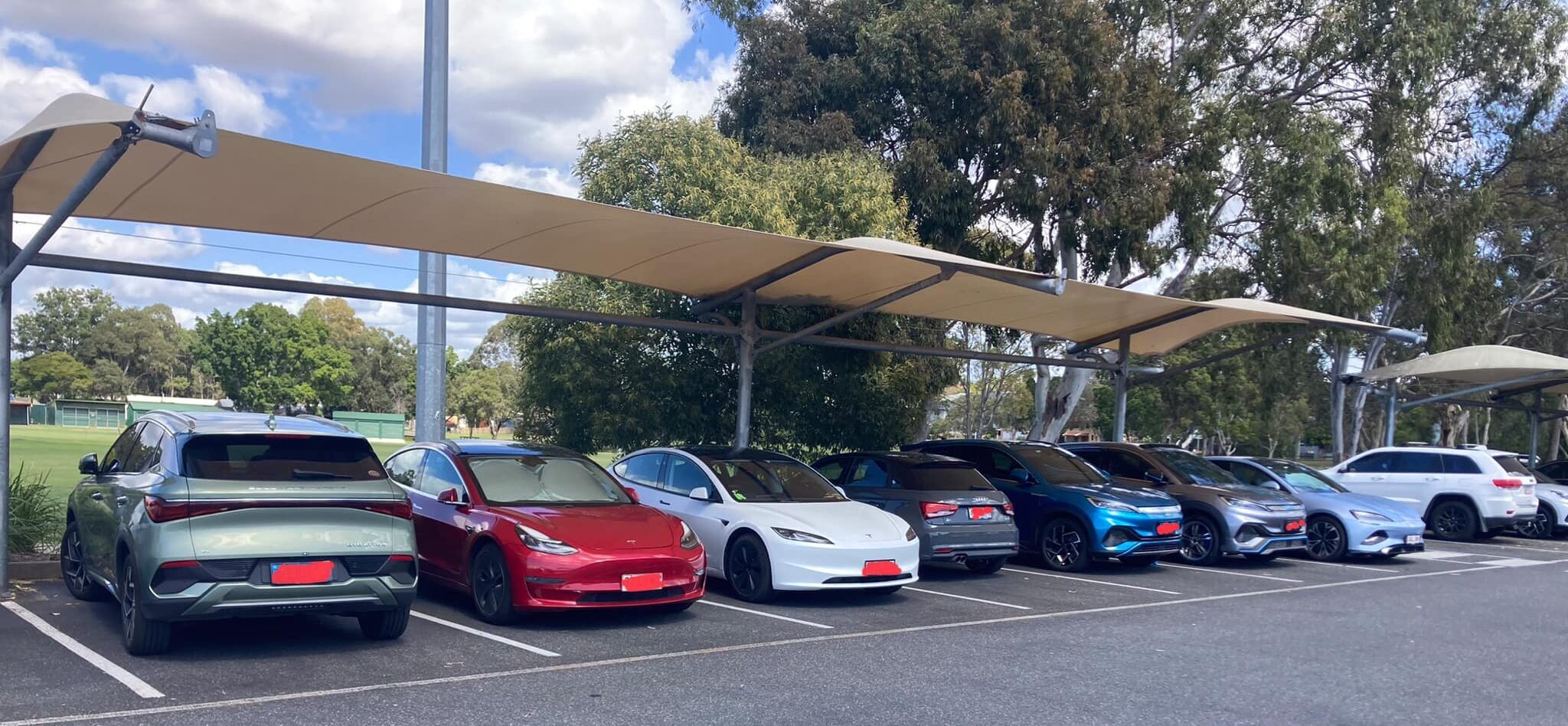Sign up for daily news updates from CleanTechnica on email. Or follow us on Google News!
Battery electric vehicles only achieved a 5.9% penetration of the new vehicle market in Australia in August. This is 5,892 out of 100,786 total light vehicles sold. It was 6,743 in July. Perhaps it’s time to admit that there is a slowdown and a pivot to PHEVs. Strangely, the more the BEV market reduces in Australia, the more I see positive news stories about electric vehicles in my news stream. Is there chaos in FUDland?
The launch of BYD’s Sealion 06 SUV lifted the PHEV numbers for the month to 2,644, 1,058 of which were the Sea Lion 06. Adding BEVs and PHEVs together gives us a more respectable 8.5% of vehicles sold having a plug. Australia is following the global trend of a move towards PHEVs — there are still a lot of drivers who just don’t trust BEVs to get them where they want to go. The Sea Lion 06’s numbers are even more impressive when you consider how little advertising BYD has done. Here is one man’s experience after driving the Sea Lion 06 for 3 months. Will the Mitsubishi Outlander PHEV survive BYD’s competition?
All carmakers suffered reductions in electric vehicle sales, not just market leaders Tesla and BYD. The auto market in Australia as a whole contracted 8% compared to August 2023. Drive identifies the current “cost of living crisis,” economic downturn, high interest rates, and clearing of post-pandemic waiting lists as the reasons why the 20-month growth streak in the Australian market is coming to an end.

The price war continues, with MG, Tesla, and BYD offering discounts, low-interest financing, and other deals. There are also more new models coming in. The Smart 1 and 2 and the Chery Omoda E5 have just gone on sale. We have booked a test drive with Chery for Friday, so will get back to you on that.
The top selling cars in the Australian market in August were the Toyota RAV4 (6,712 — note that most of these were hybrid electric vehicles), then the Ford Ranger (5,431), followed by the Toyota HiLux (4,496). Electric vehicle decline was led by Tesla, down 27.7% last month. That’s despite deep cuts to the price of the Model Y — reduced by AU$10,000.
Highlights for EVs in August included the MG4 achieving the top spot for small cars over AU$40,000; the BYD Seal being second for medium cars under AU$60,000; the Tesla Model 3 getting the top spot for medium cars over AU$60,000; and the Tesla Model Y achieving the top spot for medium SUVs over AU$60,000. Carsales has named the Model Y the best family EV and the Model 3 the best city EV of 2024.
The top selling BEVs in Australia in August 2024 were:
- Tesla Model Y (1,330 sold in August) — year to date 15,199
- Tesla Model 3 (1,063 sold in August) — year to date 12,902
- BYD Atto 3 (427 sold in August) — year to date 5,487
- BYD Seal (371) — year to date 5,033
- MG4 (309) — 3,387
- Volvo EX30 (220) — 1,534
- MG ZS EV (174)
- BYD Dolphin (165) — 1,639
- BMW i4 (118) — 1,453
- Kia EV6 (114) — 1,132
Not much joy in the chart for Hyundai this month.

Over the ditch, in New Zealand, August’s numbers are almost identical to July’s. They are having their own version of Groundhog Day, but at least they are not going backwards like their Australian cousins. James from EVDB tells me that a lot of demonstration models hit the roads this year but don’t show in the numbers, as they were registered last year. The big news is the bargains that are now available — Nissan NZ is now selling the LEAF at NZ$29,990 — for a brand new 2024 model. He tells me that “It’s the first time we’ve seen a new EV under $NZ 30k.” He warns that this is a run-out sale.
Just under 12% of new car sales in NZ came with a plug (8.3% BEV, 3.4% PHEV). The top ten best-selling BEVs in New Zealand in August 2024 were:
- Tesla Model Y — 116
- Nissan Leaf — 59
- MG4 — 48
- BYD Atto 3 — 36
- BYD Dolphin — 28
- Kia EV9 — 28
- VW ID.4 — 24
- VW ID.5 — 24
- Skoda Enyaq — 21
- Tesla Model 3 — 17
Although the NZ top ten is similar to the Australian one, NZ has access to Volkswagen’s EV lineup. It is strange to me that VW electric cars are not available in Australia’s much larger market.
On a weirdly positive note, Australian media recently aired a segment on a popular news commentary program, “The Project,” which declared that electric vehicles could not be charged from a domestic power point. Thousands would have to be spent to install an EV charger. You can watch it here if you are so inclined. The reason that I see it as positive is that many EV owners responded and corrected the presenters under the YouTube video.
Of the scores of comments, only a couple were derisive of EVs. The vast majority attempted to set the record straight — like this one for example:
“I’ve owned an EV for 2 years and never had a problem with charging. People seem to forget that have a refuelling station at home when it comes to EVs and charging overnight is effortless. I had to drive our petrol car to work the other day and as I was leaving realised, I had to refuel. It took me 14 minutes out of my way to drive, refuel and get back to the point I would have been had I not needed to refuel. Charging at home takes me about 20 seconds to plug in and didn’t cost me tens of thousands of dollars to install a power point or change the wiring. The regular power point in the garage was fine.”
And just as well. With all the announcements of all the new electric cars being launched before Christmas, maybe Santa will be delivering some. We are even supposed to be getting a Cadillac. “The Electric Viking” makes an attempt here to list them. One of my concerns is that they are starting to blend together into a similar looking mass of SUVs. All priced in the same range. How about the promised utes? How about the small urban cars? We are still anxiously awaiting the BYD Seagull (Dolphin Mini) and the Shark ute. Many Australian homes have a big car and a small car. If all that was replaced was the small urban petrol runaround, it would certainly make a difference.
Some of the bargains now on offer in Australia and New Zealand are generating FOMO (fear of missing out). Hopefully this will help overcome car buyers’ fear of change (FOC) and cut through the FUD. Sadly, there are still some people who will not buy an EV simply because it is made in China. (So is your phone and laptop!) For them, we might have to wait until the brand is more acceptable. Perhaps another five years? Until then, the future continues to be bright and electric.
Have a tip for CleanTechnica? Want to advertise? Want to suggest a guest for our CleanTech Talk podcast? Contact us here.
Latest CleanTechnica.TV Videos
CleanTechnica uses affiliate links. See our policy here.
CleanTechnica’s Comment Policy




